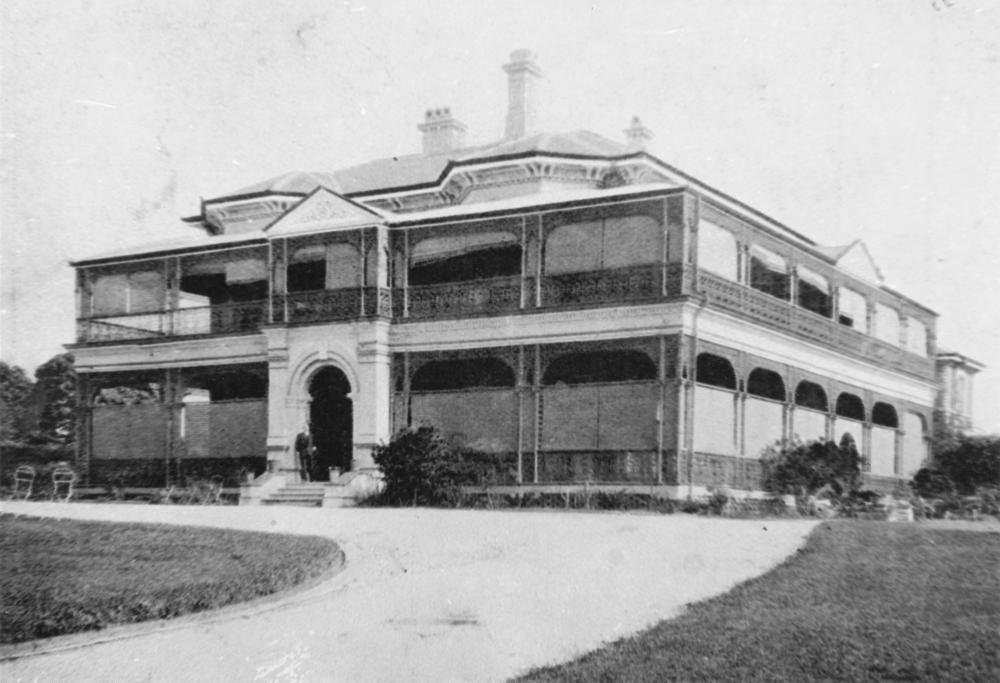Guest blogger: Dr Judith Powell - Q ANZAC 100 Fellow.
What connects two historic houses in the Brisbane suburbs of Ascot and Hamilton with the life of one of Australia's most significant, notorious and controversial artists?
In 1942, the year of his first solo exhibition in Sydney, the artist Donald Friend enlisted as a gunner in the AIF. He was 27, widely travelled, and on his way to being famous. Homosexual, urbane and sensual, Friend admits that "the reduction from an inflated ego to a mere number (NX 96987) was painful" although he found comfort and artistic inspiration in "the comradeship of the ranks."1
In a series of letters to Sydney friend Patricia Bennet - "Darling Chickadee" - Donald Friend describes life in North Queensland, in training camps around New South Wales, and briefly in the School of Military Intelligence outside Brisbane, at Redcliffe. "Shush! I am now completely shrouded in Silence & Mystery, & full of Activities that must not ever be thought about in public. ... Brisbane my love is indeed very rococo & full of Yanks & Things but really quite dull in spite of all."2
Toward the end of 1943 Friend volunteered to take part in experiments to test malarial treatments in North Queensland but was back in Brisbane in December. "They call this place now 'the American village' - and the name is justified. Yanks - millions of them, soldiers, sailor and marine. And the girls! ... I remember how Queensland danced a little while ago; waltzes, two-steps, the Pride of Erin and all those Victorian affairs. Now they jitterbug at a terrific speed."3
While in Brisbane Donald Friend met Colonel Mic Sandford, who had asked a mutual friend to introduce them. Sandford, three years Friend's junior but a veteran of the Crete campaign, worked for Central Bureau, a signals intelligence organisation set up by General MacArthur. The code breaking organisation operated out of Nyrambla, a grand mansion at 21 Henry Street Ascot where IBM tabulators had been installed into the newly air-conditioned and insulated garage.

Front view of Nyrambla in Ascot, 1932. John Oxley Library, State Library of Queensland. Neg 67869
Sandford found Friend a job.
Central Bureau was "a sort of intelligence outfit staffed by an odd collection of artists, poets, musicians and writers." Friend's job was "to decode Japanese cyphers and he cracked none at all. To hear him talk about it is to imagine that somebody is giving a reading of Graham Greene."4
Widely respected and much loved, Colonel Sandford was also homosexual. Although his private and public lives were kept strictly apart, he was comfortable with his sexuality. Indeed the artist Jeffrey Smart, an Adelaide friend, credited Sandford with helping him come to terms with his own sexuality. Sandford regularly hosted bohemian parties at his residence at 50 Eldernell Terrace, Hamilton (Lange Powell House) and Donald Friend describes arriving at 3 am on one occasion to be met by Sandford's heavily made-up batman, wreathed in Chanel No 5.5
In Queensland men could be jailed for up to 14 years for homosexual sex. In addition to cases involving American servicemen - these were handled by US Military Courts - between 1939 and 1948, 151 charges were dealt with by the Queensland courts6. Nonetheless, as Donald Friend recognised, "the army is a homosexual institution"7 .
Dr Judith Powell
1 Gavin Fry and Colleen Fry, Donald Friend Australian War Artist 1945, John Currey O'Neil Publishers Pty Ltd, 1982, p.7.
2 4 March 1943, Donald Friend to Patricia Bennett, written from Seabrae LHQ School of Military Intelligence Redcliffe. Donald Friend Correspondence 1941-1961, State Library of Queensland
3 12 December 1944, Donald Friend to Patricia Bennett. Donald Friend Correspondence 1941-1961, State Library of Queensland
4 Newspaper article cited in Ink Emma Ink, Newsletter April 1986 - see https://www.ozatwar.com/sigint/cbicanewsletters.htm
5 Craig Collie. Codebreakers. Inside the shadow world of signals intelligence in Australia's two Bletchley Parks. Allen and Unwin. 2017, pp. 303-304.
6 Yorick Smaal. Sex, soldiers and the South Pacific 1939-45. Queer identities in Australia in the Second World War. Palgrave Macmillan. 2015.
7 17 February 1944. Ian Britain (ed.). The Donald Friend Diaries. Chronicles and confessions of an Australian artist. Text Publishing. Melbourne. 2017. p. 131
Comments
Your email address will not be published.
We welcome relevant, respectful comments.